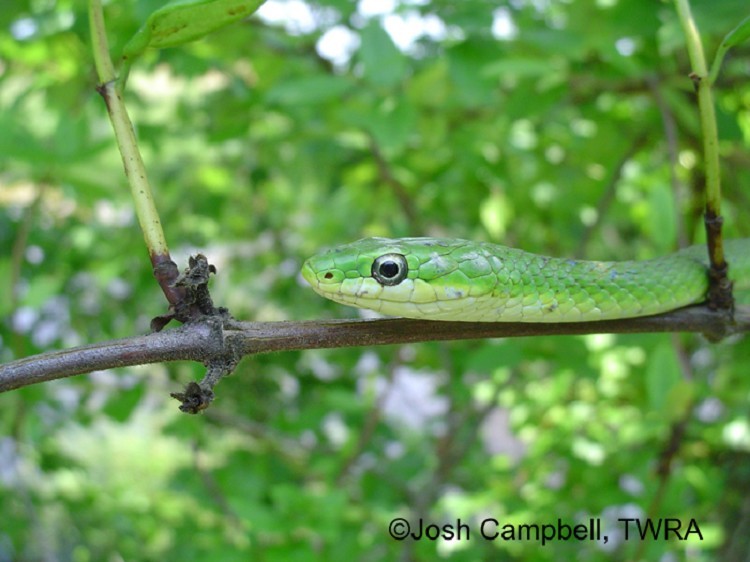Rough Greensnake
The Rough Greensnake, also known as the “vine snake,” occurs across the state except for upper northeastern Tennessee. Only one subspecies, Northern Rough Greensnake (O. a. aestivus), is found in Tennessee.
Description: A slender, moderately long snake (22.0 to 32.0 inches in length), which is light green and has keeled scales. Belly is white, yellow, or pale greenish. Males have longer tails than females. Young are a grayish-green color.
Similar Species: None.
Habitat: Occurs in dense vegetation, especially along the edges of streams, rivers, ponds, and lakes; often found on overhanging limbs. They can also be found along river bluffs, on forested hillsides, and in shrub and forest-edge habitat.
Diet: Consumes mainly spiders, grasshoppers, crickets, caterpillars, and dragonflies.
Breeding information: Adults mate in spring and fall. Females select a nest site under rocks, leaves, rotting logs, or bark to lay 3-10 white, elongated eggs during the summer. Eggs hatch out in late summer after incubating for 36-43 days. Females may use the same nest cavity year after year, and sometimes multiple females may use a nest at the same time.
Status in Tennessee: A fairly common snake, but can be difficult to see. Not protected.
Fun Facts:
- This very arboreal, camouflaged snake is an excellent climber and becomes almost invisible in dense, green shrubs and vines.
- Rough Greensnakes turn blue when they are dead.
Best places to see in Tennessee: On branches overhanging edges of lakes or streams.
